Montana’s Wilderness
”As Wild As I Had Found It"
Several years ago, my wife and I woke before daybreak and set out to where the Blackfoot River starts as a trickle. From Highway 200, we bounced up a rutted Forest Service road with our coffee sloshing in our truck’s cup holders. We arrived at the empty trailhead parking lot just as the sun was coming over the Continental Divide.
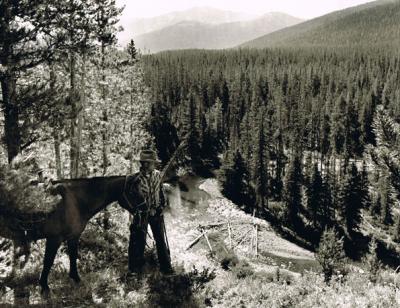
It was a clear and still day with a hint of wood smoke in the air from the season’s waning fires. By mid-morning we had shed our long-sleeve shirts, the daybreak chill a distant memory. After a couple miles from the trailhead, we had stepped over more than one pile of bear scat stained purple with the last of the summer huckleberries. We talked nervously to avoid surprising anything above us on the food chain, but went silent again as the trail guided us above the tree line and visibility improved.
We ate a late lunch high on a ridge and in awe of the sweeping Scapegoat Wilderness in front of us. That afternoon we climbed higher and found a scree slope that looked as if it had been recently plowed. We began our nervous chatter again as I recalled from a college course that army cutworm moths fly up from farmlands at night and land high in the Rocky Mountains, where they burrow under boulders during the day. A grizzly can eat thousands of these moths in a single day, an essential source of calories before hibernation.
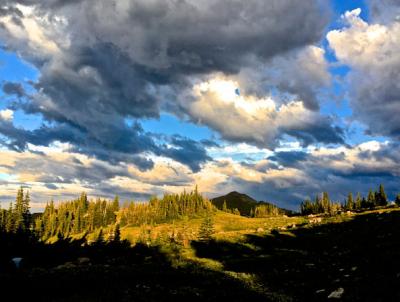
Back at the trailhead, with the last light leaving the sky, we peeled socks from our blistered feet. My body was tired, but I was filled with gratitude. I was grateful that Montana is endowed with millions of acres of public land where we can have experiences like the one my wife and I had just had. I also felt thankful that someone had the foresight to set aside the Scapegoat and other places like it.
It would be years before I knew whom to thank for the Scapegoat. His name is Cecil Garland...
Montanans have what people in most states lost long ago and now envy—a vast amount of wide-open, undeveloped country to get lost in.
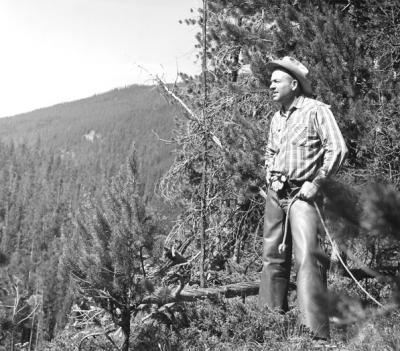
Long alpine ridges like the one in the Scapegoat, steep mountain cirques cupping turquoise lakes, and unbroken prairie that eventually gives way to the buttes, breaks and badlands of eastern Montana. Untouched since the unimaginable tectonic forces and ancient ice ages created them, these wild places are now the fabric of the Treasure State and the setting of stories that define who we are as Montanans. Many of these places will endure just as they are today because they are protected as wilderness.
The stories of protecting these vast landscapes are often as interesting as the stories of traveling through them.
After the Second World War, in the midst of a booming economy and sprawling urban growth, our forests were disappearing at an alarming rate. We needed a response to that unfettered loss of our natural heritage.
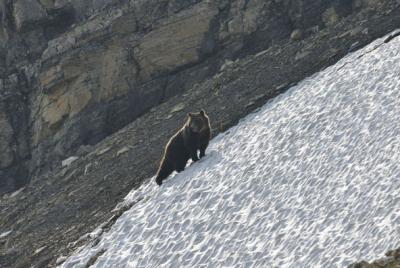
A uniquely American idea, the Wilderness Act was that response. The legislation defined and recognized wilderness as an “area where the earth and its community of life are untrammeled by man, where man himself is a visitor who does not remain.”
When most people think of wilderness in Montana, they immediately think of “the Bob,” a 1.5 million-acre tangle of mountains, rivers, and grizzly bears pieced together by three different wilderness areas—the Bob Marshall, Great Bear, and Scapegoat. But Montana is home to 16 different wilderness areas totaling 3.5 million acres of unspoiled backcountry. Wilderness protects Granite Peak, the highest in Montana at 12,799 feet, and lower-lying landscapes such as the short grass prairie of UL Bend and the pothole country of Medicine Lake, close to the North Dakota border.
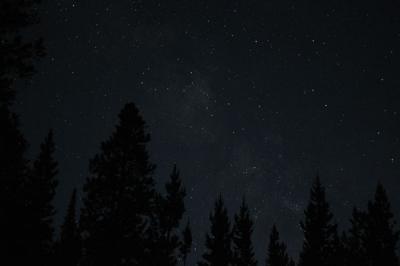
The Mission Mountain Tribal Wilderness, with its dramatic waterfalls, high alpine lakes, and perpetual snowfields, became the first tribal wilderness area in the country when the Confederated Salish and Kootenai Tribes set it aside in 1982. And Bear Trap Canyon, one of four units comprising the Lee Metcalf Wilderness, was the first Bureau of Land Management wilderness area designated in the nation.
Each of these 16 areas has an origin story—a creation myth, so to speak. And each of these wilderness areas comes with its own set of heroes, people who relentlessly pushed for its protection and took on special interests and powerful individuals along the way.
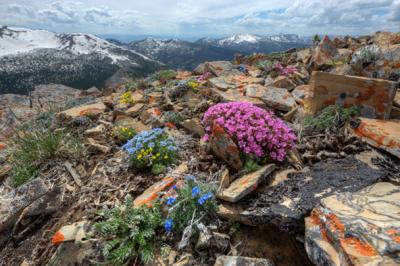
The Madison Range had advocates who were outfitters in the Gallatin Canyon. The Selway-Bitterroot had Doris Milner, a housewife and mother of four living in Hamilton. And the Scapegoat, the first citizen-proposed wilderness in the nation, had Cecil Garland, a Lincoln hardware store owner and World War II veteran.
Montana is a state that prides itself on its independence and self-reliance. In part, that’s why wilderness suits this state. Garland knew that.
The fight to protect the Scapegoat went on for more than 10 years and ultimately cost Garland his business in Lincoln and took a toll on his marriage. Along the way he battled the powerful timber lobby and eventually convinced Montana’s Republican Congressman James Battin and Democratic Senators Mike Mansfield and Lee Metcalf to support his idea for designated wilderness in the country north of Lincoln.
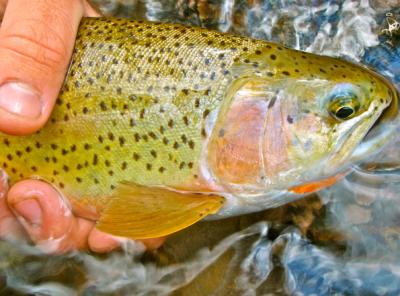
In 1968, Garland testified at a congressional hearing in support of the Lincoln Backcountry Wilderness Act. He spoke eloquently about his time in the woods and what inspired him to act, saying:
When I first brought my family to the community of Lincoln, I was told of a great wild country to the north... I longed to see that country, to know its wild beauty, to catch its fish and to climb its mountains…
We took from our duffle an old elk reed bugle, and as the chill air fell with the sun, we shattered the calm of that September evening with a blast from our elk call. Then, almost as by magic, above us on Red Mountain, a bull elk bugled his challenge that this was his territory…
All through the frosty fall air the calls echoed back and forth and I knew that I had found wilderness. I would not sleep that night, for I was trying to convince myself that this was really so; that there really was wild country like this left and that somehow I had found it…
That night I made a vow, that whatever the cost, for whatever the reason, I would do all that I could do to keep this country as wild as I had found it.
In 1972, Congress protected the 240,000-acre Scapegoat Wilderness Area. Wounded from the fight to save this corner of Montana, Garland moved to western Utah shortly after the designation, where he lived until his death in 2014.
Today, places like the Scapegoat are our children’s birthright, unchanged and just as wild as we found it. We have these unspoiled places not simply because they exist, but because some people had the courage to fight for their protection, people like Cecil Garland.
Montana’s 16 Wilderness Areas
Absaroka-Beartooth Wilderness
Location: Between Billings and Yellowstone National Park • Size: 920,343 acres
Description: Consisting of two major ranges. To the east, the Beartooths are rugged and glaciated, with huge alpine plateaus and 29 peaks above 12,000 feet. To the west, Absarokas consist of steep ridges, grassy meadows and heavily forested canyons.
Anaconda-Pintler Wilderness
Location: Southwest of Butte • Size: 158,615 acres
Description: Old-growth forest, windswept ridges, alpine meadows and rugged alpine peaks along the Continental Divide. Cirques with alpine lakes and glacial moraines make for spectacular scenery.
Bob Marshall Wilderness
Location: West of Great Falls • Size: 1,063,503 acres
Description: The most ecologically complete mountain wilderness in the country, with rugged peaks, big river valleys, lakes, large meadows and extensive coniferous forests.
Cabinet Mountains Wilderness
Location: Southwest of Libby • Size: 94,272 acres
Description: Receiving more than 100 inches of precipitation annually, the Cabinets consist of snowcapped peaks, glacial lakes and valleys cut by streams and waterfalls.
Gates of the Mountains Wilderness
Location: Northeast of Helena • Size: 28,562 acres
Description: A wild canyon landscape of limestone spires, outcrops and caves carved into shear cliffs.
Great Bear Wilderness
Location: South of Glacier National Park • Size: 286,700 acres
Description: Knife-edge ridges along the Continental Divide, heavily forested mountainsides, gently sloping meadows and open river bottoms.
Lee Metcalf Wilderness
Location: Southwest of Bozeman • Size: 254,288 acres
Description: Spectacular alpine peaks, high sparkling lakes, U-shaped valleys, meadows and deep canyons.
Medicine Lake Wilderness
Location: South of Plentywood within Medicine Lake National Wildlife Refuge
Size: 11,366 acres
Description: Preserving a portion of northeastern Montana’s marsh–filled prairie, this wilderness area consists of rolling dunes, a shallow lake and sand hills within a national wildlife refuge.
Mission Mountains Wilderness
Location: North of Missoula • Size: 73,877 acres
Description: This wilderness area encompasses the east side of the Missions with elevations ranging from 3,500 to 9,820 feet, and features hidden basins, hanging valleys and 350 lakes.
Mission Mountains Tribal Wilderness
Location: Southeast of Polson • Size: 89,500 acres
Description: Established in 1982 by the Confederated Salish and Kootenai Tribes, this wilderness area has an abundance of water from perpetual snowfields that feed one of the densest concentrations of alpine lakes in the northern Rockies.
Rattlesnake Wilderness
Location: North of Missoula • Size: 32,976 acres
Description: Winding ridges with steep east-facing cirques, lake-filled basins in sloping forests and secluded hanging valleys with waterfalls and steep-gradient streams.
Red Rock Lakes Wilderness
Location: Centennial Valley within the Red Rock Lakes
National Wildlife Refuge • Size: 32,350 acres
Description: This remote basin holds an amazing, interconnected system of lakes, streams, and marshes all managed for wildlife, especially the 215 bird species observed there.
Scapegoat Wilderness
Location: Southeast of Great Falls • Size: 259,966 acres
Description: Thousand-foot limestone cliffs stretching for miles and scattered subalpine forests of spruce, white bark pine, and fir that open onto grassy parks and gently sloping meadows.
Selway-Bitterroot Wilderness
Location: West of Hamilton • Size: 251,443 acres
Description: Treeless and austere granite peaks towering above gentle ridges, hanging valleys and heavily forested valleys with surprising pockets of bogs and marshes.
UL Bend Wilderness
Location: South of Malta within the CMR National Wildlife Refuge
Size: 20,819 acres.
Description: Isolated within the Charles M Russell National Wildlife Refuge, this broad bend on the Missouri River consists of dramatic breaks, short-grass prairie, and some of the most productive big game habitat in North America.
Welcome Creek Wilderness
Location: Southeast of Missoula • Size: 28,135 acres
Description: Steep, rough breaks covered with old-growth forest and topped by exposed ridges. Deep canyons sweep down to one of Montana’s premier blue-ribbon trout streams, Rock Creek.

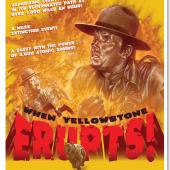
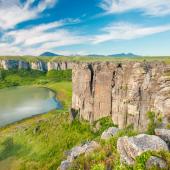

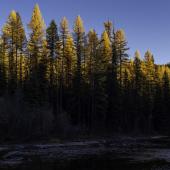
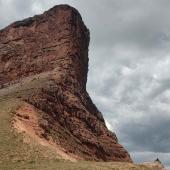
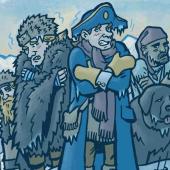
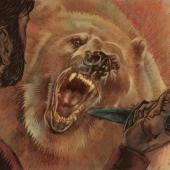

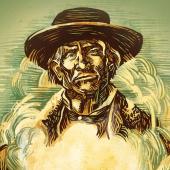
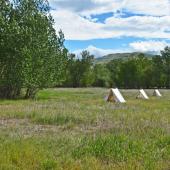
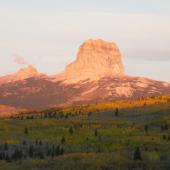
Leave a Comment Here